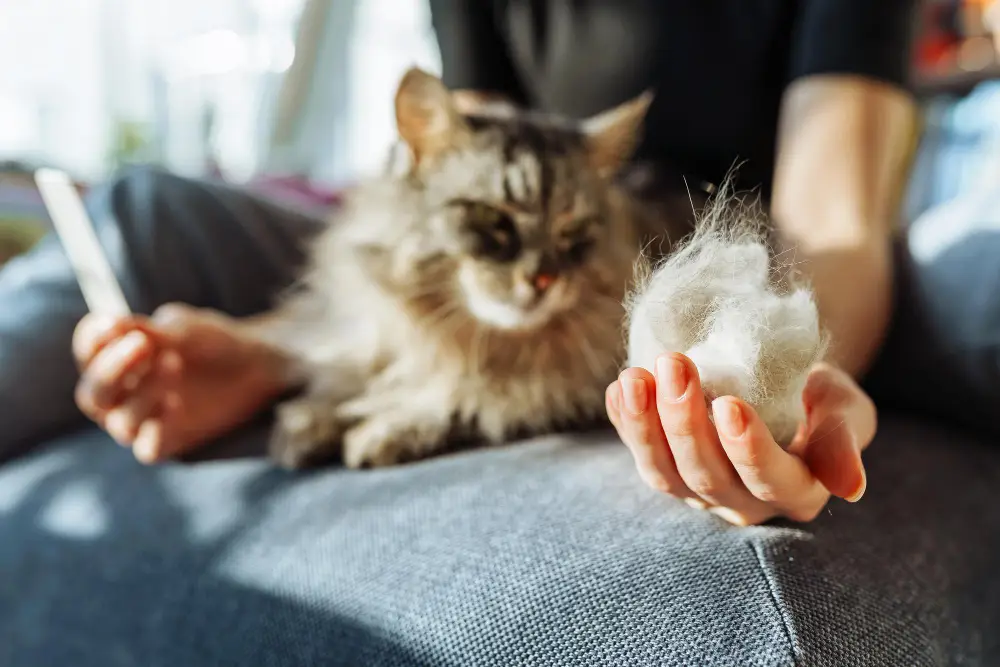How to Reduce Cat Hairballs Naturally
If you’re a cat parent, you’ve likely witnessed that awkward moment when your beloved fluffball hacks up a hairball. While it’s not the most pleasant sight, it’s usually normal. But when it happens often—or your cat seems uncomfortable—it’s time for a gentle, natural plan to reduce cat hairballs. By making small changes to grooming, diet, and daily routines, you can help keep your cat healthier and your home cleaner.
What Are Hairballs—and Why Reduce Cat Hairballs?
Cats are meticulous groomers. Their rough tongues pull loose fur during cleaning, and some of that fur is swallowed. Usually, the fur passes through the digestive system without issue. Sometimes, though, it clumps together in the stomach and is brought up as a hairball. In rare cases, hairballs can cause blockages that lead to digestive problems—another reason to reduce cat hairballs before they become a serious concern.
How Often Is Too Much?
An occasional hairball—once or twice a month—is normal for most cats. If it’s happening multiple times a week, it’s time to look for ways to reduce cat hairballs naturally and prevent them from becoming a health issue.
1. Grooming: Your First Line of Defense to Reduce Cat Hairballs
Brush regularly. A quick daily brush for long-haired cats—or a few times a week for short-haired cats—removes loose fur before it can be swallowed. Slicker brushes, deshedding tools, or soft bristle brushes are excellent options. Regular grooming is one of the most effective ways to reduce cat hairballs.
Time it right. Brushing works best when your cat is already relaxed, such as after playtime or a meal, making it easier to keep up a routine that helps reduce cat hairballs.
2. Hydration & Diet: Keep Things Moving to Reduce Cat Hairballs
Serve moisture-rich meals. Wet or canned food naturally boosts your cat’s hydration, making it easier for hair to pass through the digestive system. Staying hydrated is essential to reduce cat hairballs naturally.
Add fiber. Natural fiber sources like plain pumpkin, beet pulp, psyllium husk, or fresh cat grass help hair move through the gut instead of clumping. A little added fiber can go a long way to reduce cat hairballs and improve digestion.
Support coat health with nutrition. A diet rich in animal protein plus omega-3 and omega-6 fatty acids keeps the skin healthy, reduces shedding, and helps reduce cat hairballs over time.
3. Gentle Remedies to Reduce Cat Hairballs
Healthy oils. Small amounts of fish oil, coconut oil, or olive oil can act as natural lubricants for the digestive system. Not only do they support skin and coat health, but they also help reduce cat hairballs by easing the passage of ingested fur.
Hairball gels. Veterinary-approved, petroleum-free gels can help hair slide through more easily. A pea-sized amount on the paw or mixed into food can help reduce cat hairballs without fuss.
Fiber treats. Specially formulated treats containing pumpkin or other gentle fibers are a tasty way to reduce cat hairballs while rewarding your kitty.
4. Keep Them Moving & Calm to Reduce Cat Hairballs
Stay active. Play sessions, climbing opportunities, and toys that motivate movement help digestion and reduce cat hairballs by limiting stress-related over-grooming.
Reduce stress. Anxiety can lead to excessive grooming and more swallowed fur. Providing scratching posts, vertical spaces, hiding spots, and consistent routines can significantly reduce cat hairballs in anxious cats.
5. Know When to Call the Vet to Reduce Cat Hairballs Safely
See your vet if:
- Hairballs happen more than once a week
- Your cat shows other symptoms like lethargy, appetite loss, diarrhea, constipation, frequent retching without producing hair, weight loss, or a swollen belly
These signs could point to more serious issues. Even with efforts to reduce cat hairballs, some cases require professional care to prevent complications.
Quick 7-Day Kick–Start Plan to Reduce Cat Hairballs
| Day | Action |
| 1–2 | Begin daily brushing with a comfortable brush to reduce cat hairballs |
| 3 | Switch some meals to wet food and add extra water to reduce cat hairballs |
| 4 | Introduce a small amount of plain pumpkin or cat grass |
| 5 | Add a fish oil or omega-3 supplement to reduce cat hairballs |
| 6 | Increase play sessions and consider a water fountain |
| 7 | Monitor litter box habits and adjust fiber or hydration to reduce cat hairballs |
FAQs on How to Reduce Cat Hairballs
How many hairballs are normal?
Up to two per month is normal for most cats; more than that is a sign you should take steps to reduce cat hairballs.
Is petroleum jelly safe?
It can be in small amounts, but veterinary-approved gels are safer for regular use when trying to reduce cat hairballs.
Can pumpkin help with hairballs?
Yes—plain pumpkin adds fiber and moisture to aid digestion and reduce cat hairballs naturally.
Will shaving or slimming my cat help?
Weight loss can reduce over-grooming. Shaving should only be done carefully and ideally by a professional to help reduce cat hairballs safely.
What if my cat retches but no hairball comes out?
If it happens often, it could be a blockage or health issue. Contact your vet to address the cause and reduce cat hairballs effectively.
In Summary
Reducing cat hairballs naturally is about working with your cat’s needs and habits. Here’s your simple plan:
- Groom often to remove loose fur and reduce cat hairballs
- Hydrate and add fiber to keep digestion moving and reduce cat hairballs naturally
- Use safe lubricants and treats to help hair pass and reduce cat hairballs without stress
- Watch for symptoms and involve your vet when needed
With patience and consistency, you can reduce cat hairballs and make them a much rarer event in your cat’s life.







